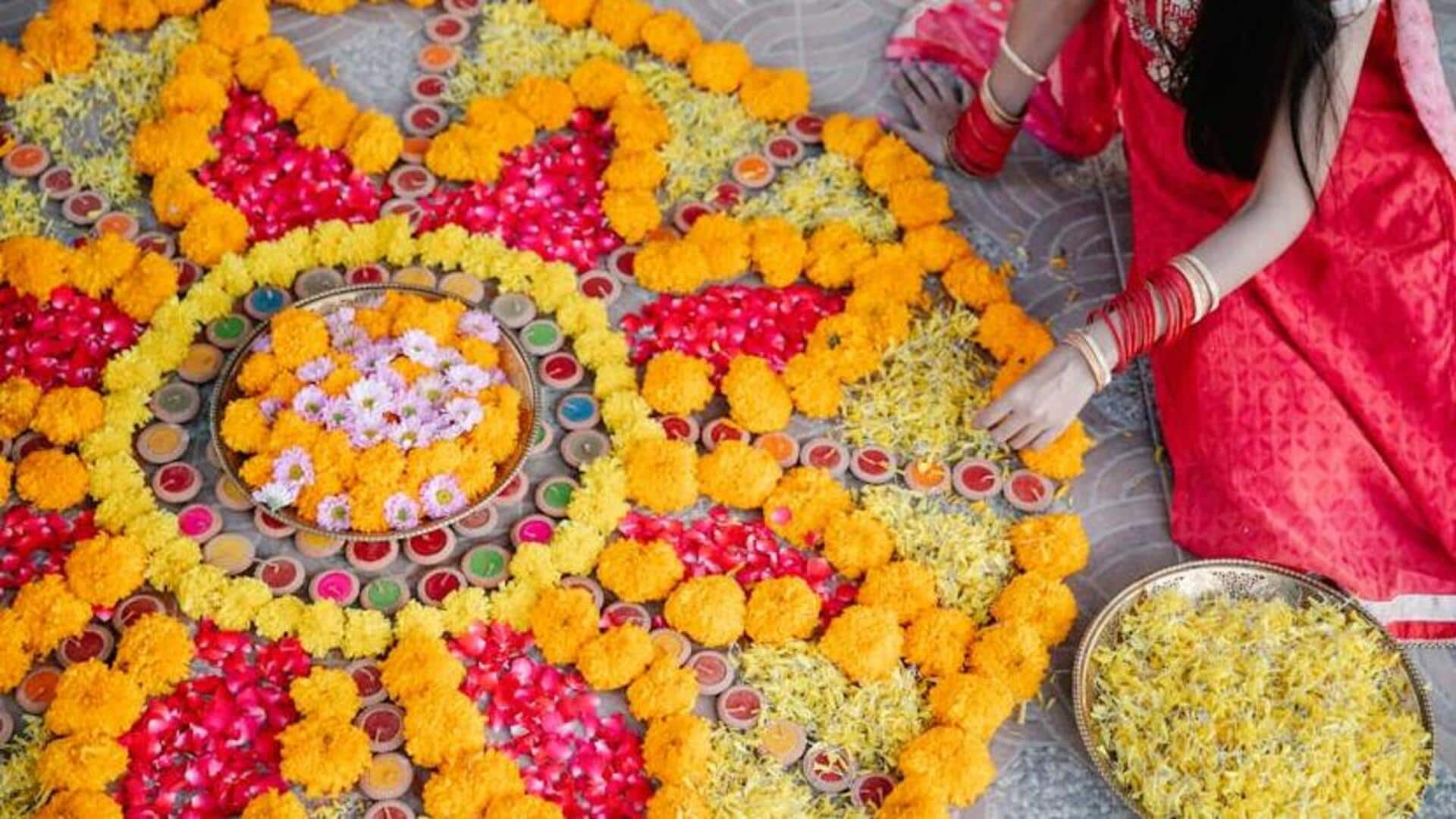
Beautiful doorstep designs: Comparing India's rangoli with Japan's noren
What's the story
Doorstep designs hold a special place in the hearts and homes of both India and Japan, going beyond mere decoration to symbolize welcome and good luck. In India, they come alive as vibrant rangoli, while in Japan, they manifest as the beautiful noren (fabric dividers). Both traditions run deep and are woven into the very fabric of each nation's cultural tapestry, mirroring values, seasons, and celebrations.
Tradition
Rangoli: Colors at the Indian threshold
Rangoli is a beautiful and vibrant art form found all over India, distinguished by its bright colors and intricate patterns. Created with colored rice powder, sand, or flower petals, these designs are often displayed outside homes, particularly during festive occasions like Diwali. This tradition extends beyond mere decoration, carrying a spiritual purpose: to invite Hindu deities into the home.
Symbolism
Noren: The Japanese fabric dividers
In Japan, noren are traditional fabric dividers that are displayed at the entrance of shops or houses. They feature various symbols or logos that indicate the nature of the business or residence behind them. Crafted from cotton or linen, noren function as an open sign for shops, while providing a tasteful separation between public and private spaces.
Changes
Evolution over time
The traditions of both rangoli and noren have evolved over time. Modern rangoli designs often use synthetic colors and materials, including plastic stencils, for ease of creation. Similarly, modern noren might use synthetic fabrics for durability against weather conditions. Even with these contemporary adaptations, the essence of both practices is firmly anchored in the cultures of India and Japan, respectively.
Occasions
Festivals and celebrations
Rangoli is a key element of Indian festivals like Diwali (the festival of lights) and is considered auspicious. Meanwhile, special types of noren are utilized during Japanese festivals such as Tanabata to enhance the celebratory ambiance. These doorstep designs are often more intricate during these occasions, mirroring the festive spirit.
Exchange
Cultural exchange through design
The past few years have seen a beautiful cultural exchange, with people around the world adopting these practices in their own unique ways. Cities outside India offer workshops where you can learn the art of rangoli, and almost all Japanese restaurants around the world use noren to provide that authentic feel.